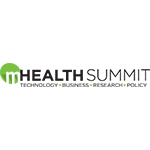New Industry Resource Offers Healthcare Providers Best Practices for Capturing Unique Device Identifier Data for Implantable Devices to Support the U.S. FDA UDI Rule
GS1 US® has published an implementation guidance, titled “Point-of-Care Scanning for Surgical Implants,” to help healthcare providers electronically capture unique device identifier data for surgical implants at the point-of-care (POC). This can include scanning of medical device product barcodes in the operating room, at the patient’s bedside, or anywhere a healthcare professional is administering care—helping to ensure the right device is used at the right time for the right patient, and that the patient’s record reflects the correct device identification.
The implementation guidance was developed by the GS1 Healthcare US® Point of Care Scanning Workgroup with input from healthcare providers implementing GS1 Standards for POC scanning and solution providers of associated supporting systems, including electronic health records (EHRs), enterprise resource planning (ERP), and device inventory management systems. The Workgroup examined key aspects of POC scanning projects, gathered implementation insights and lessons learned, and identified key considerations to plan an implementation project, such as data readiness (data acquisition/sources, data storage and data flow) and system readiness (hardware and software readiness, and interoperability).
“The ability for hospitals to scan surgical implant UDIs is essential to realizing the full benefits of the U.S. Food and Drug Administration’s Unique Device Identification Rule,” said Angela Fernandez, vice president of community engagement, GS1 US. “POC scanning not only saves time and increases accuracy, but it also helps improve patient safety. When accurate data and implant identification is stored in the patients’ electronic health records, providers can facilitate better care.”
GS1 is a U.S. FDA-Accredited Issuing Agency for UDI, and GS1 Standards are authorized for use in implementing the requirements of the U.S. FDA UDI Rule. POC scanning utilizes two types of data: data from a barcode and product master data from supply chain systems. The GS1 Global Trade Item Number® (GTIN®) is what connects them; it is encoded in the barcode as the unique device identifier (DI), and is stored in supply chain systems as a key for accessing information about that product, making POC scanning accuracy possible.
To download the “Point-of-Care Scanning for Surgical Implants” guideline, visit www.gs1us.org/POCscanning. For more information about GS1 US, visit www.gs1us.org.
About GS1 Healthcare US
GS1 Healthcare US® is an industry group that focuses on driving the adoption and implementation of GS1 Standards in the healthcare industry in the United States to help improve patient safety and supply chain efficiency. GS1 Healthcare US brings together members from all segments of the healthcare industry to address the supply chain issues that most impact healthcare in the United States. Facilitated by GS1 US, GS1 Healthcare US is one of more than 30 local GS1 Healthcare user groups around the world that support the adoption and implementation of global standards developed by GS1. For more information, visit www.gs1us.org/healthcare.
About GS1 US
GS1 US, a member of GS1®, is an information standards organization that brings industry communities together to solve supply chain problems through the adoption and implementation of GS1 Standards. More than 300,000 businesses in 25 industries rely on GS1 US for trading-partner collaboration and for maximizing the cost effectiveness, speed, visibility, security and sustainability of their business processes. They achieve these benefits through solutions based on GS1 global unique numbering and identification systems, barcodes Electronic Product Code (EPC®)-based Radio Frequency Identification (RFID), data synchronization, and electronic information exchange. GS1 US also manages the United Nations Standard Products and Services Code® (UNSPSC®). www.gs1us.org.


























